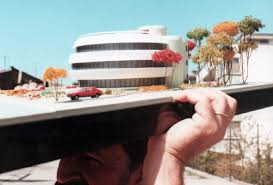Architectural model making is an essential tool in the protection and preservation of cultural heritage sites. Cultural heritage sites, including historic buildings, monuments, and archaeological sites, are valuable assets that must be protected for future generations. Architectural model making can help to preserve these sites by providing a means of documenting and interpreting their significance. In this article, we will discuss the role and value of architectural model making in cultural heritage protection.
- Documentation
Architectural model making provides a means of documenting cultural heritage sites in detail. By creating accurate and detailed models of historic buildings and monuments, architects and designers can record the unique features and characteristics of these sites. This documentation can be used to identify the historical, cultural, and architectural significance of these sites, providing valuable information for conservation efforts.
- Conservation Planning
Architectural model making can also play a significant role in conservation planning. By architectural model maker creating detailed models of cultural heritage sites, architects and designers can develop conservation plans that take into account the unique features and characteristics of each site. These models can be used to identify areas of deterioration, assess the impact of environmental factors, and develop strategies for long-term conservation and preservation.
- Education and Interpretation
Architectural model making can also be used to educate and inform the public about the significance of cultural heritage sites. By creating detailed and accurate models of these sites, architects and designers can help to communicate the historical and cultural importance of these sites to a broader audience. These models can be used in public exhibitions, educational programs, and other initiatives to promote awareness and appreciation of cultural heritage.
- Reconstruction and Restoration
Architectural model making can also play a role in the reconstruction and restoration of cultural heritage sites. By creating accurate models of historic buildings and monuments, architects and designers can develop plans for the reconstruction and restoration of these sites. These models can be used to guide the restoration process, ensuring that the final product accurately reflects the original design and intent.
In conclusion, architectural model making is a valuable tool in the protection and preservation of cultural heritage sites. By providing a means of documenting, interpreting, and conserving these sites, architects and designers can help to ensure that these valuable assets are protected for future generations. The role and value of architectural model making in cultural heritage protection cannot be overstated, as it provides an effective means of communicating the significance of these sites to the public and promoting awareness and appreciation of our cultural heritage.

